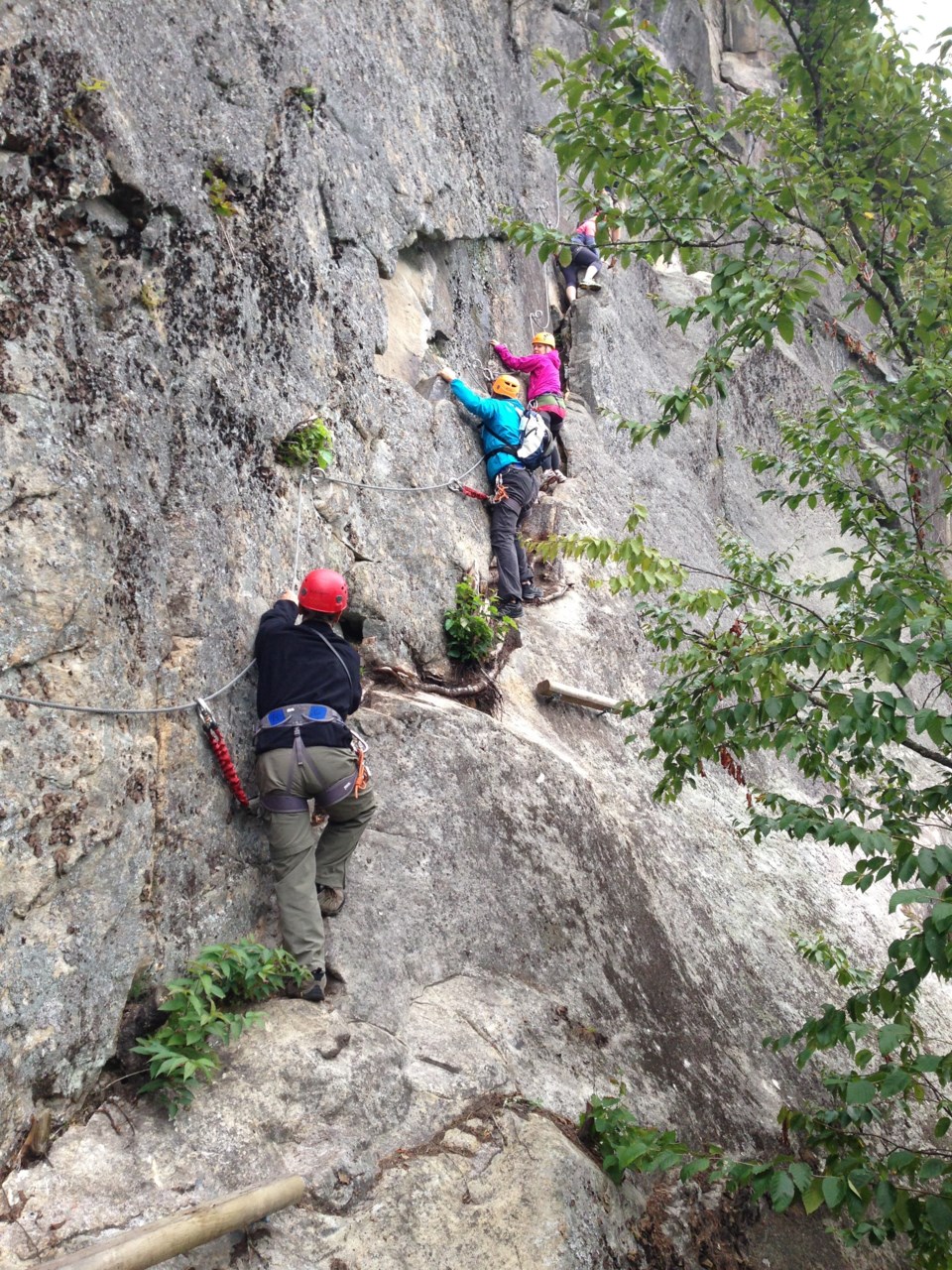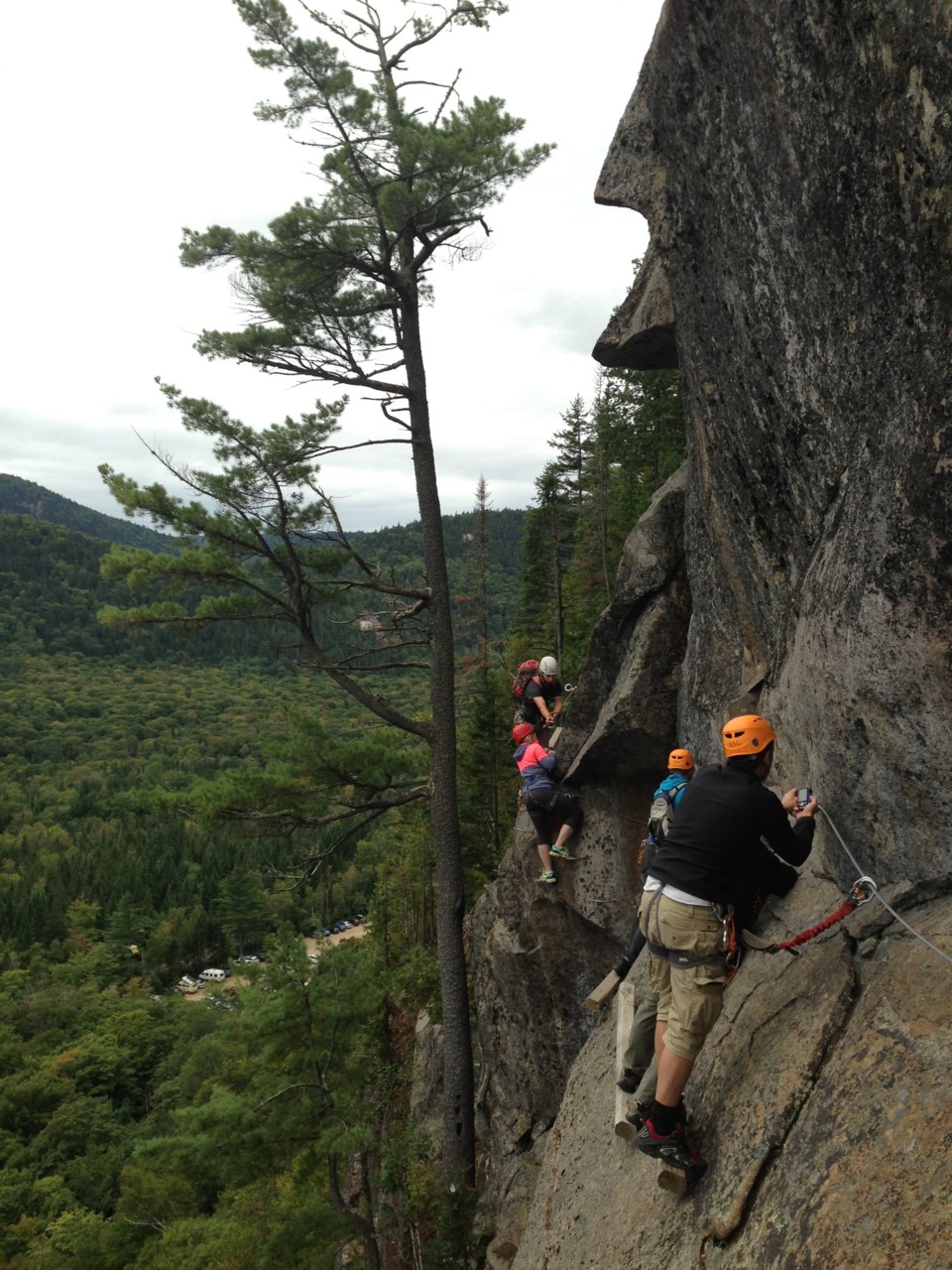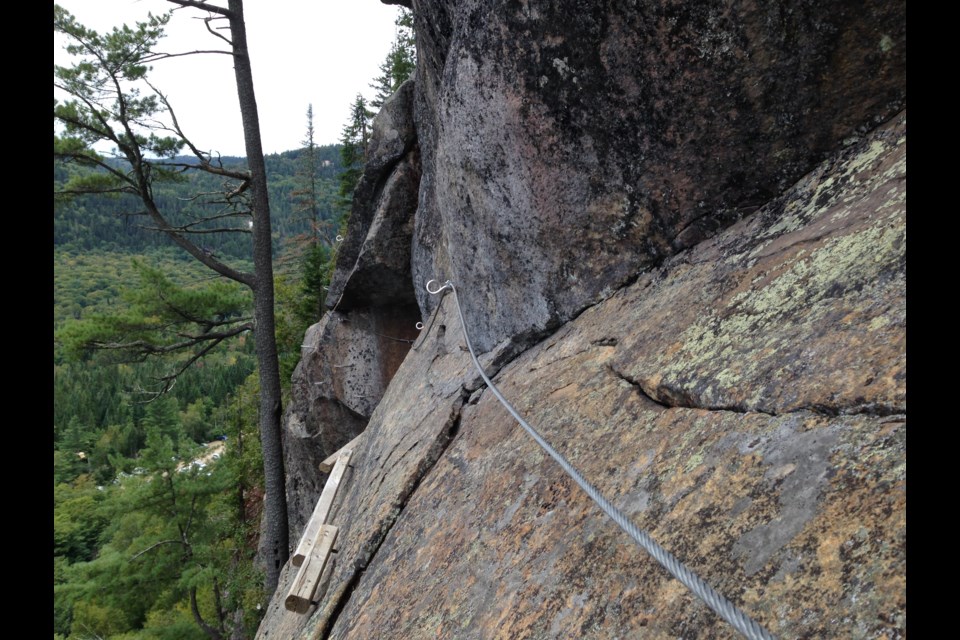We were roughly 80 metres above the ground clinging to a sheer rock face in the Laurentian Mountains when we felt the first drops of rain.
“What do you suppose will happen if there is lightning?” asked fellow travel writer Bryen Dunn, who was perched precariously beside me during a tour offered by AventureX in Vallée Bras du Nord, located a 45-minute drive from Quebec City.
It was a good question because, unlike traditional rockclimbing where ropes are what keep climbers more or less safe from gravity’s inexorable pull, we were instead attached to electricity-conducting metal cables.
It’s literally a foreign concept to most climbers in Canada, but in Europe a mountaineering discipline known as Via Ferrata — Italian for “iron way” — is an increasingly popular activity that enables amateurs with a bit of sang-froid in their veins to experience the kind of high-stakes divertissement normally reserved only for experienced rock jocks.
The activity was invented by the Italian army during the First World War as a means to get troops and equipment through the Dolomite Mountains and attack enemy forces from above. The routes were left to rust away after the war, but hikers rediscovered them in the 1960s and hundreds of new recreational ones have since been strung up throughout the Alps and other neighbouring ranges.
The way it works is you attach yourself to a thick wire bolted to the rock that stretches the entire length of a climbing route. Using carabiners (basically high-tech safety pins) attached via short lanyards to a special harness worn around the waist, Via Ferrata climbers work their way diagonally up cliffs by clipping and unclipping past anchor points located every few metres apart. Special metal footholds, handholds and even wooden bridges are also helpfully hammered into place at trickier spots, and a fall should (in theory) only last a few feet before the harness catches you.

Via Ferrata is not without controversy, with purists in the climbing community arguing that adding artificial aides is a form of sacrilege. While Europeans have been stringing gondola cables up mountains and building remote ski chalets for generations, most North Americans prefer wilderness environments to remain as pristine as possible.
The tourist town of Whistler is, perhaps unsurprisingly, the only place in mountainous British Columbia yet to offer tours, but its widespread acceptance in Quebec is now a fait accompli, with more than a dozen different places – including the famous Montmorency Falls -- across the province now offering it.
Our guide on the seven-person tour, a bilingual 24-year-old college student named Olivier Roy, says he can see it from both sides.
“I’m a climber myself and can understand why some people would feel that way, but I think there is enough room for both,” said Roy. “For one thing, you can only do Ferrata on private land, so partly it’s a property thing, but [making climbing more accessible] can change people’s lives by giving them a chance to really challenge themselves and get an appreciation for the mountains.”

An appreciation for the mountains is, of course, something many Quebec City residents already have. Vancouver get a lot of mileage out of the fact people here can go downhill skiing and sailing all in the same day but this is possible here as well. The difference is that it will instead have to be iceboat sailing on the frozen Saint Lawrence River, likely accessed from the newly developed Baie de Beauport, a multi-use public beach the government spent $24 million to build in order to help celebrate the city’s 400th birthday in 2008.
“People here really love to do things outdoors,” said Danny George, a former electrician in his mid-fifties who now leads walking tours through the winding cobblestone streets of Old Quebec, a UNESCO World Heritage site. “You kind of need to be in order to get through the winters here. People love to snowshoe or cross-country ski or go snowboarding at places like Mont-Sainte-Anne or Le Massif. Of course, the one outdoor activity that pretty much everyone here also does a lot of is snow shovelling.”
There wasn’t any snow on the ground when I visited in early September after an invitation by Quebec City Tourism but I still got a taste of plenty of other recreational options that help entice nearly five million tourists a year. It has to be said la belle province has had more than its fair share of embarrassing gaffes and brouhahas in recent years ranging from the arrests of mayors of two of its biggest cities to government-led battles over anglicized pasta and turban-wearing kids playing soccer. The cartoonishly xenophobic Parti Quebecois were booted out of power back in April after just one term in a kind of coup d'état by common sense, and it’s possible the raison d'être for inviting a group of travel writers from across North America was to help reassure people that Quebec is actually a warm and welcoming place to visit.
Which it very much is and there's a good reason that the French gave us the term “joie de vivre.” Our whirlwind weekend tour de force included a mélange of activities including cycling along the city’s separated bike paths, zooming around the Saint Lawrence in a Zodiac, trying out the jumps on Baie de Beauport’s pump track and exploring the trails of the Vallée Bras du Nord. Not to mention dining in fine restaurants such as Bistro Le Sam and Le Graffiti on the taxpayers’ generously donated dime.
While the mountains are molehills compared to B.C.’s, they are nonetheless stunning, especially in the fall when the leaves change colour. And it may be a cliché but Quebec will always be the closest thing to a foreign country most Canadians can visit without needing a passport. Vive la différence!



